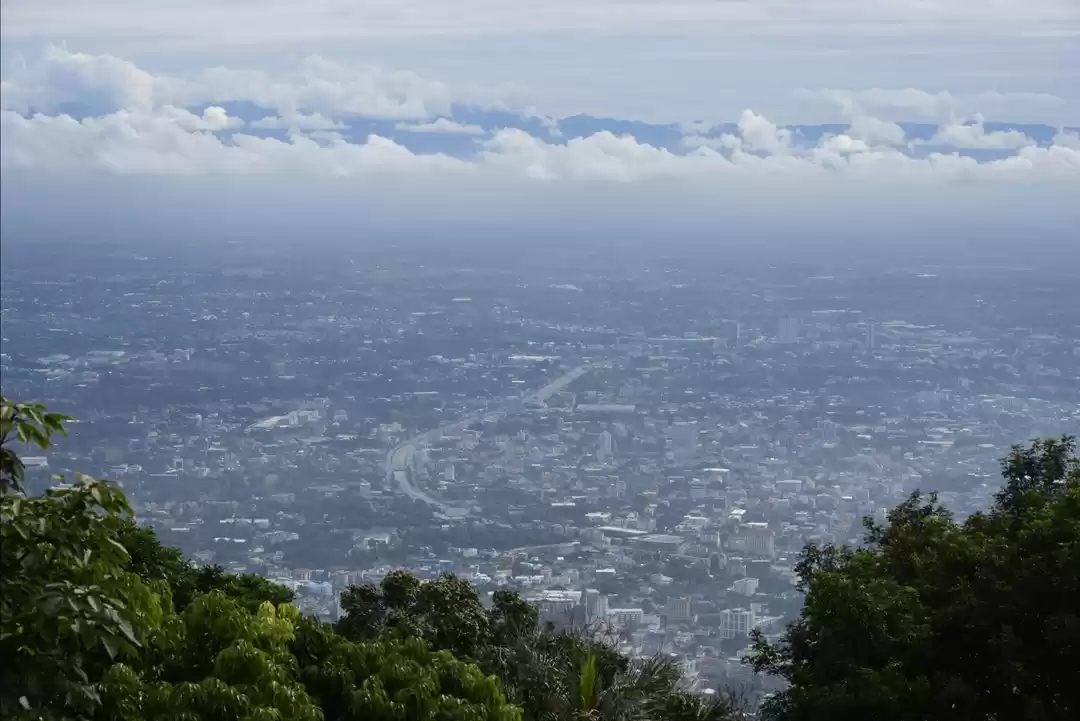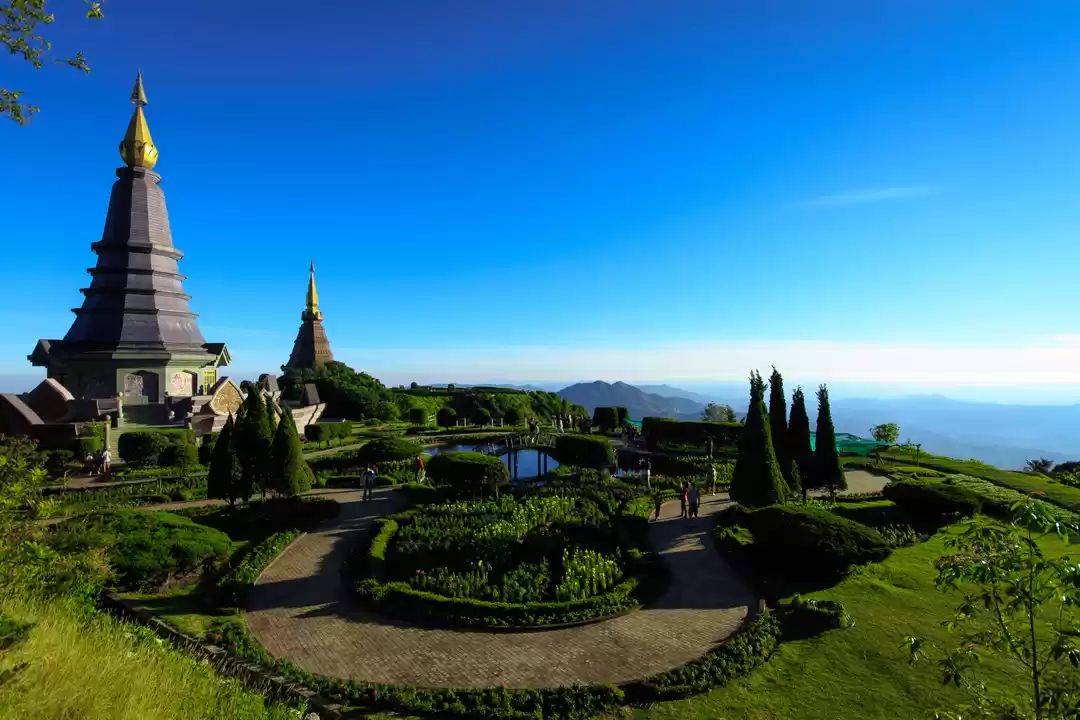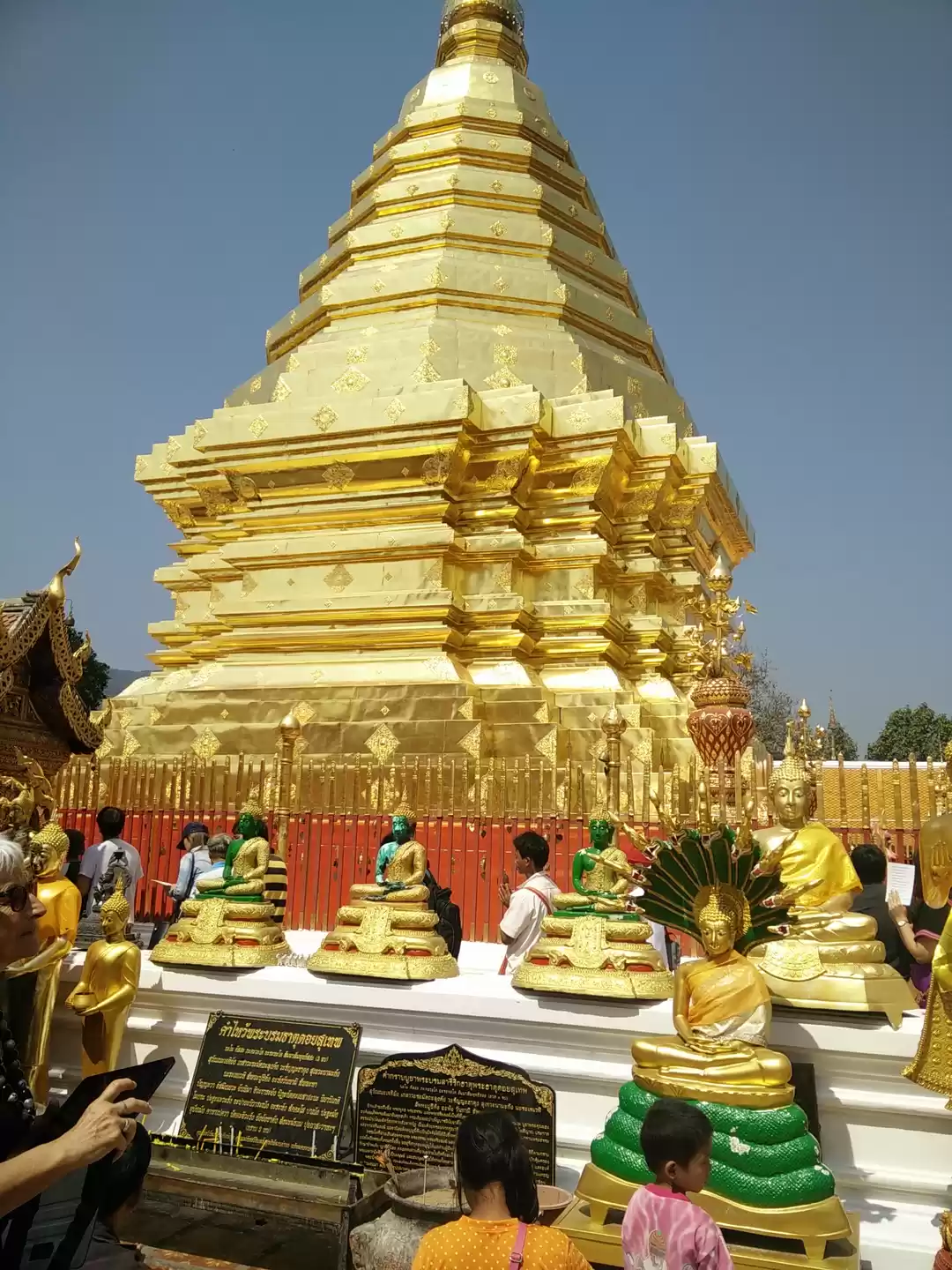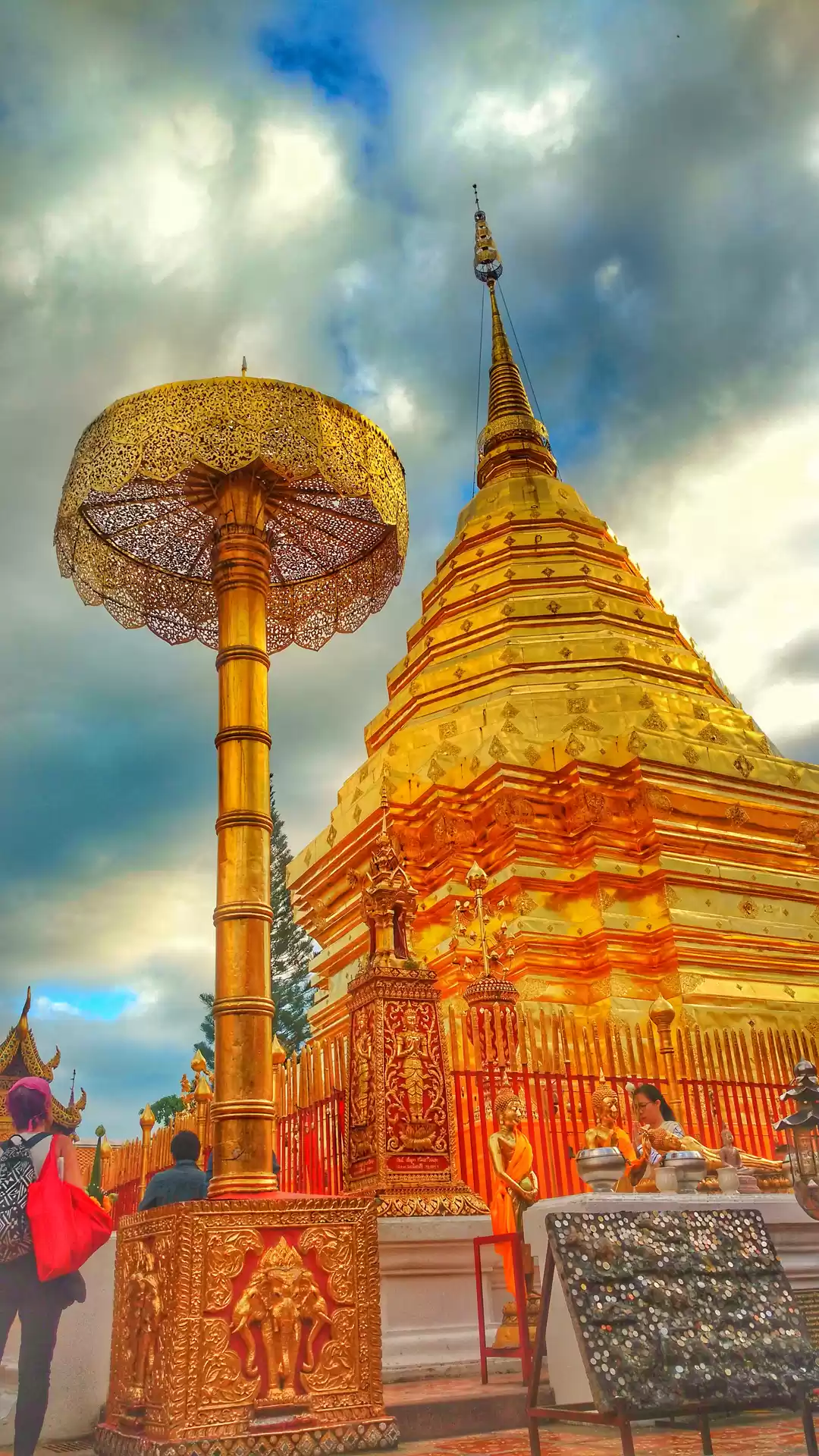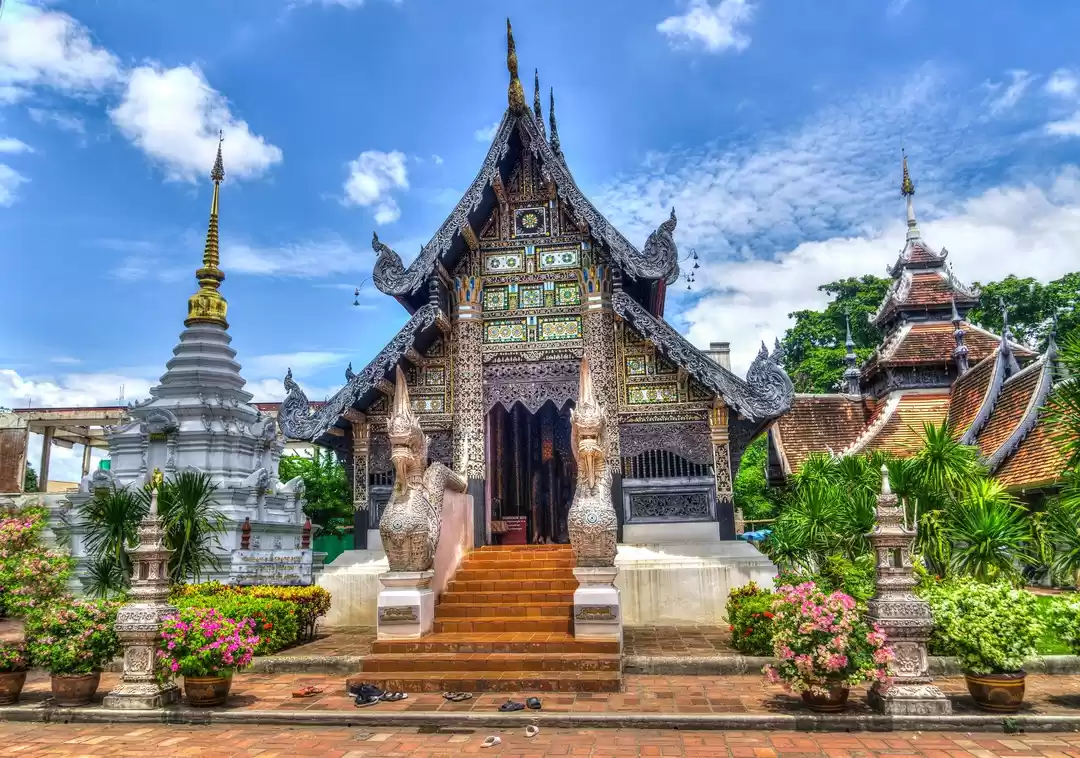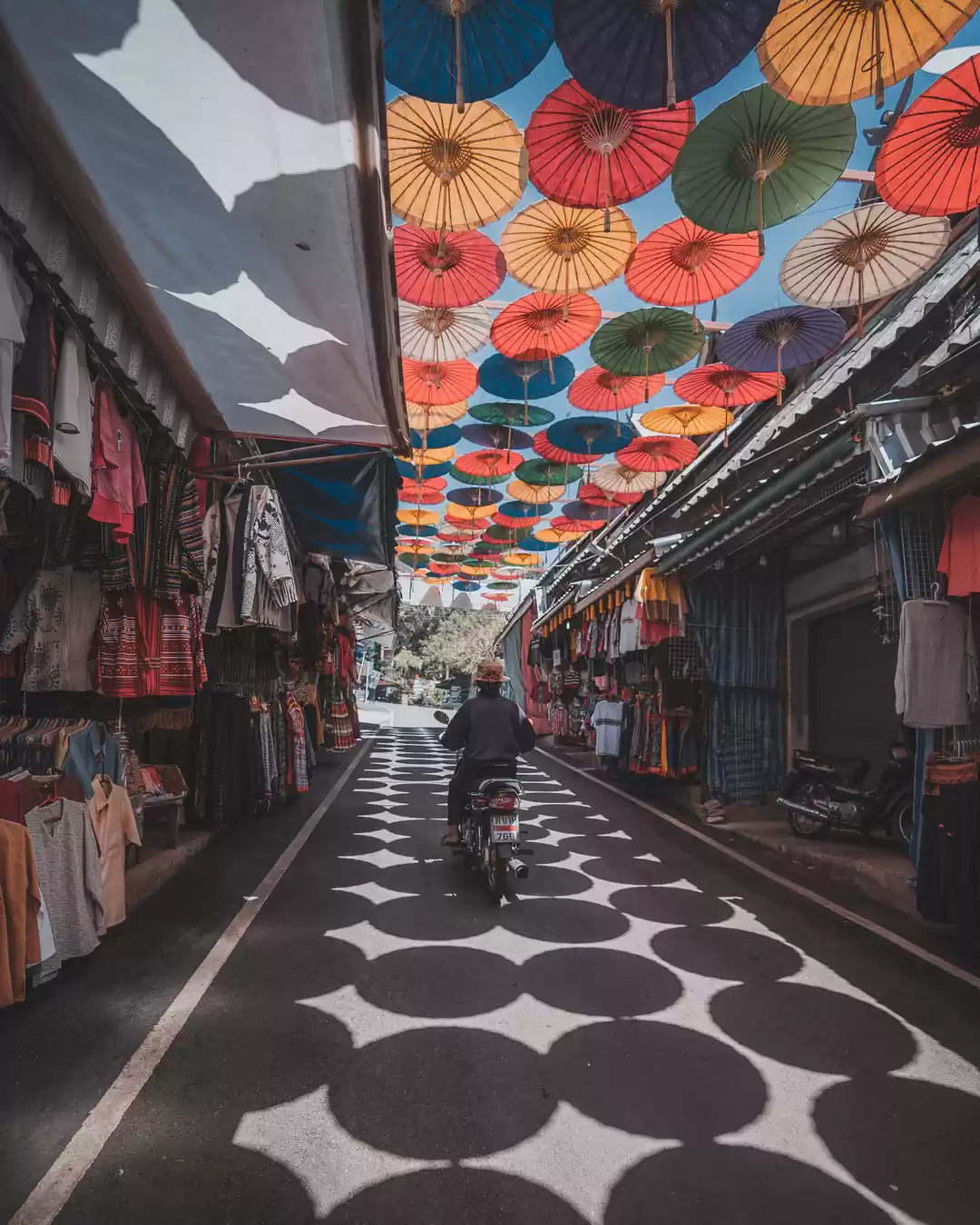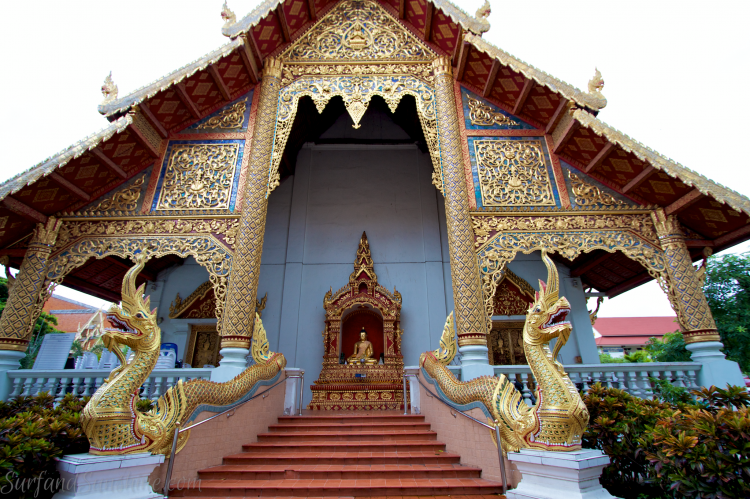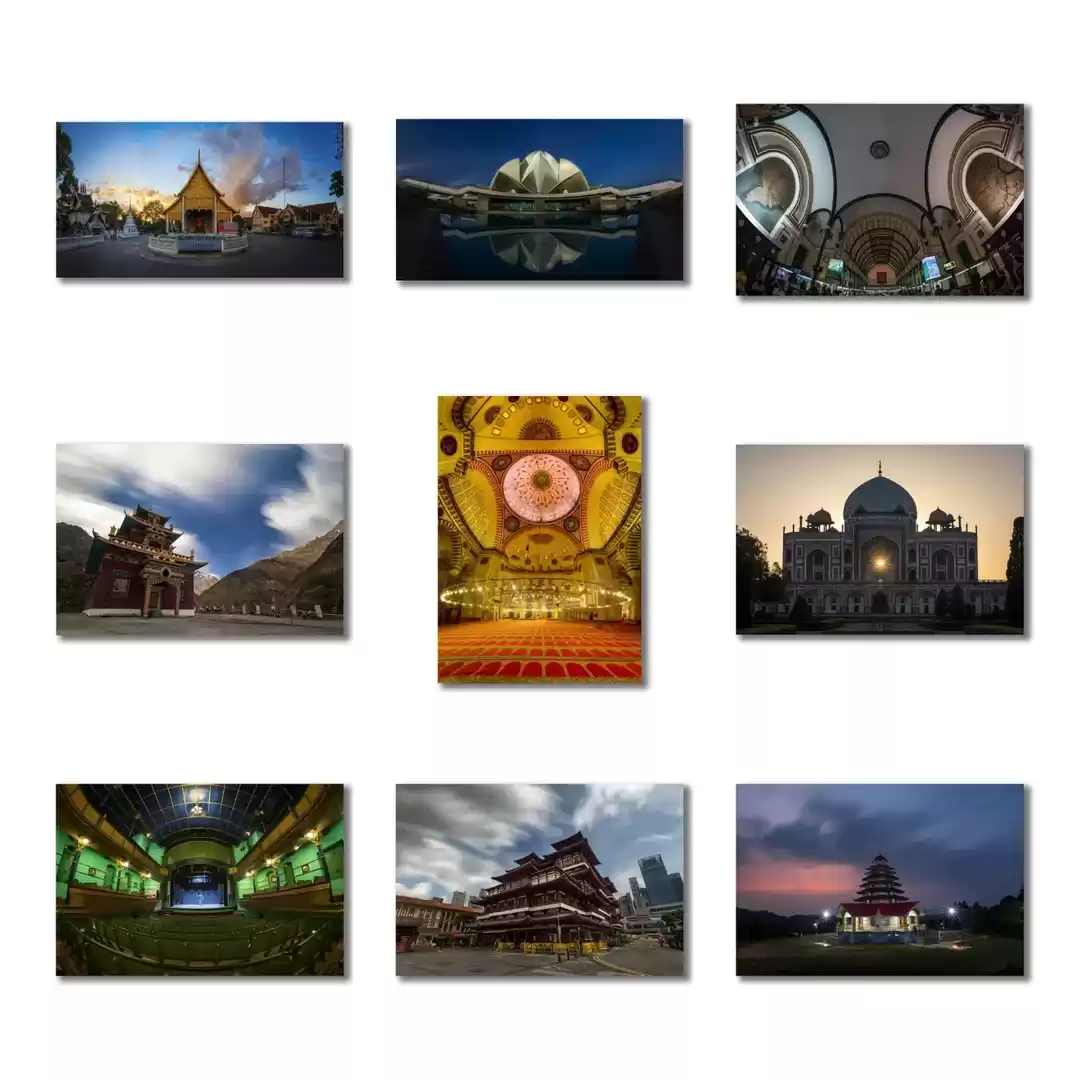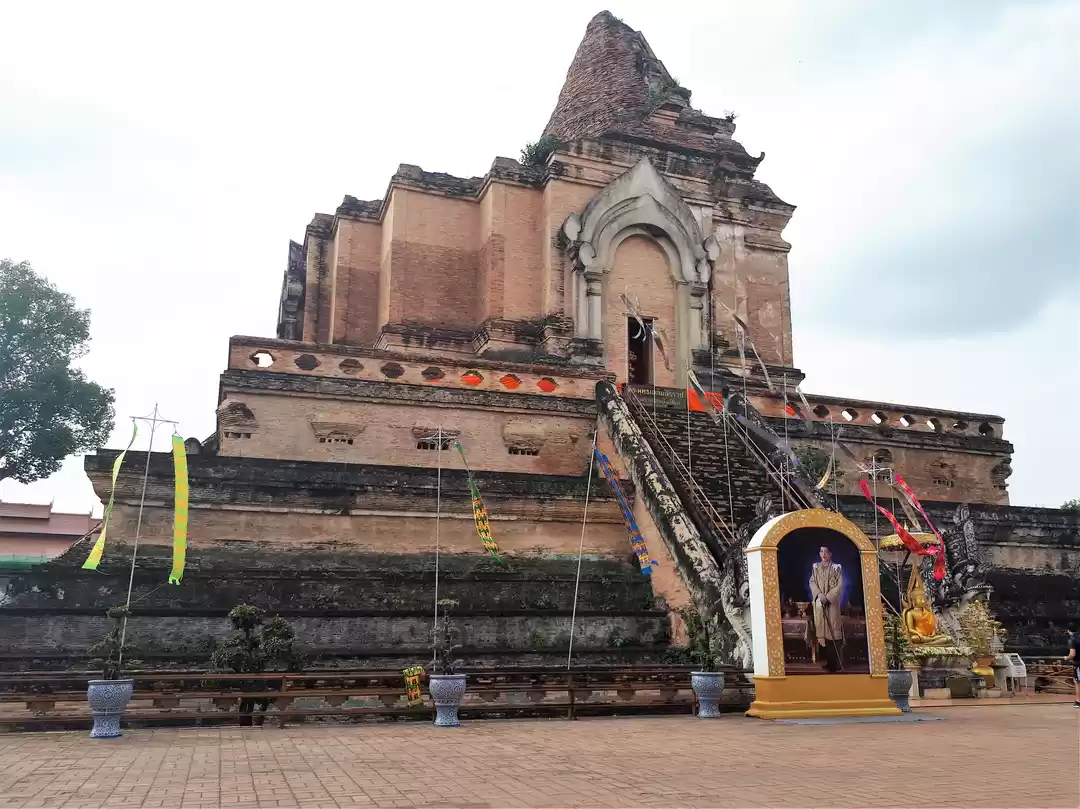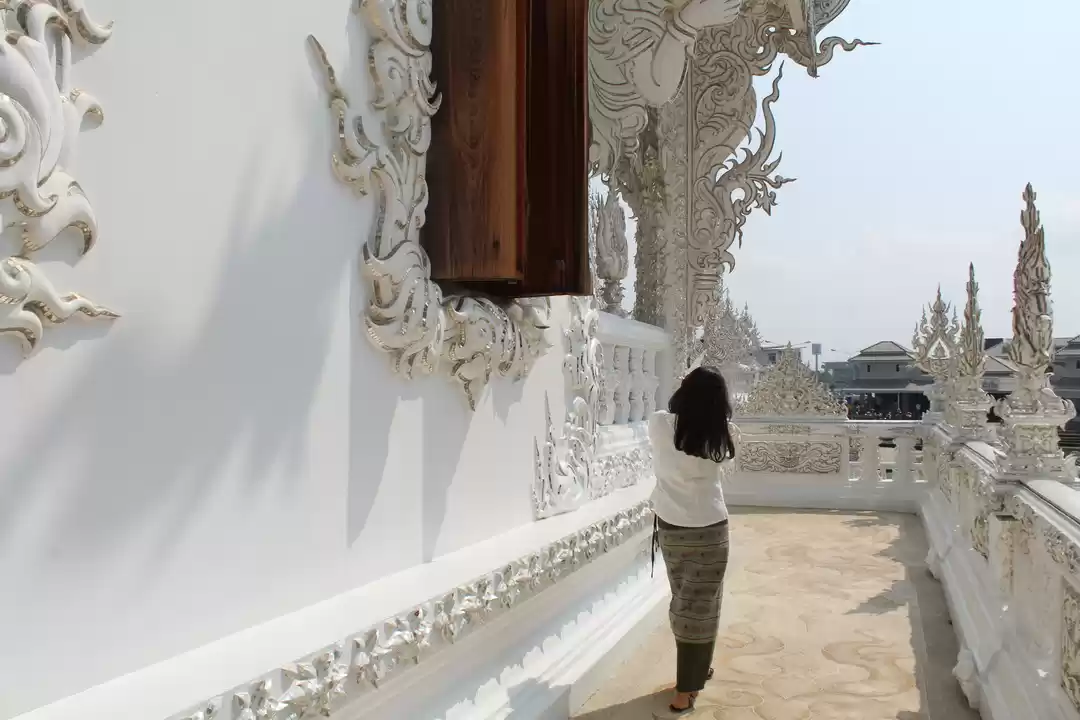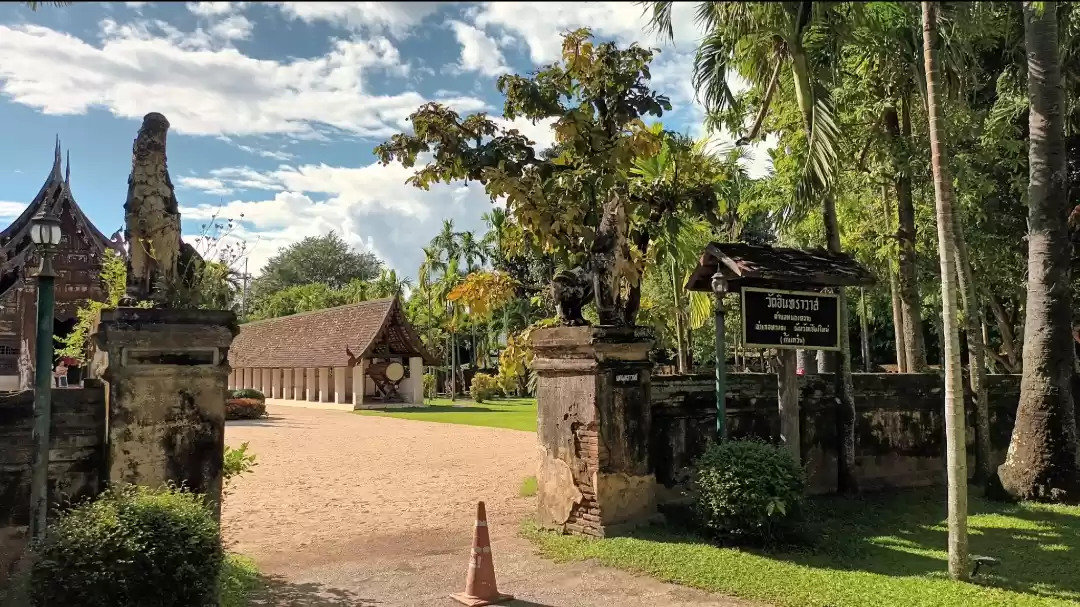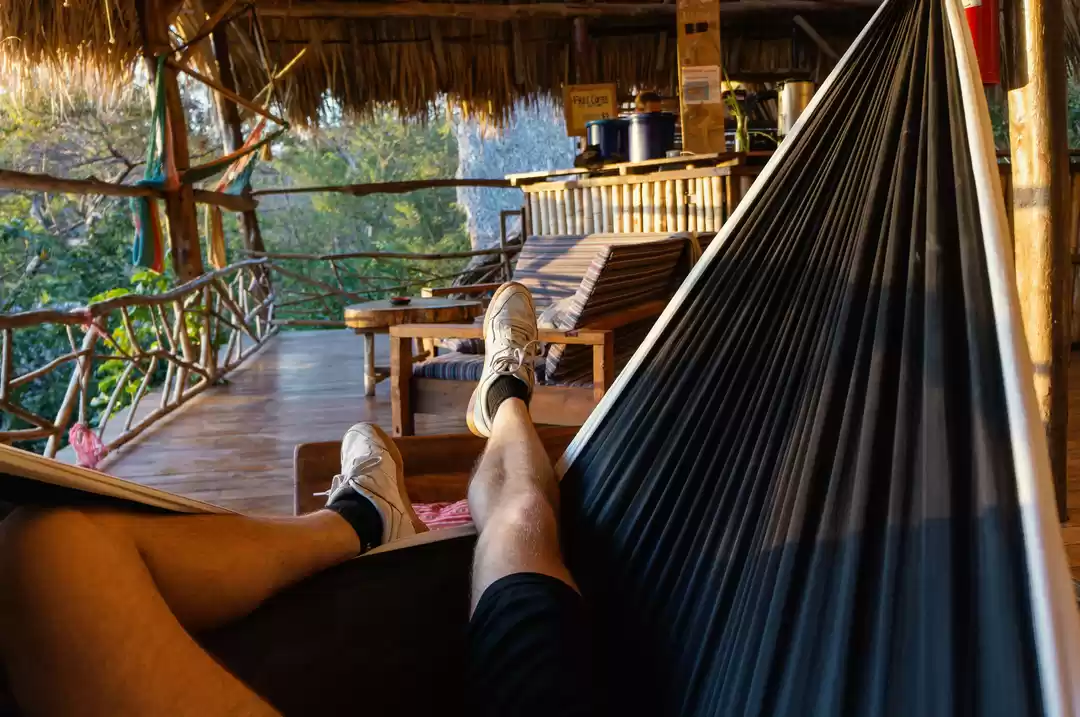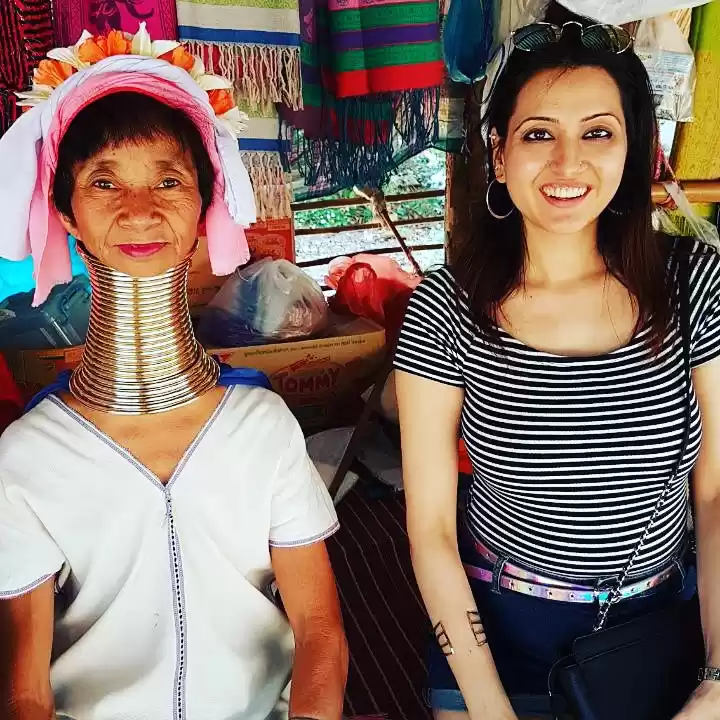Have you ever wondered what it would be like to visit a temple that is older than your country? A temple that has witnessed the rise and fall of kingdoms, the arrival and departure of empires, and the birth and death of cultures? A temple that has been home to the most revered and sacred image of Buddhism in Thailand? If you are curious about such a temple, then you should not miss Wat Chedi Luang, one of the most magnificent and majestic temples in Chiang Mai, Thailand.
Wat Chedi Luang, which means “the temple of the big stupa” in Thai, is a Buddhist temple complex located in the heart of the old city of Chiang Mai. It was built in the 14th century by King Saen Muang Ma as a burial site for his father’s ashes. The temple’s main attraction is the massive chedi, or stupa, that dominates the skyline of the city. The chedi was once the tallest structure in the Lanna kingdom, and housed the Emerald Buddha, the most sacred Buddha image in Thailand, until it was moved to Bangkok in the 18th century. The chedi was partially destroyed by an earthquake in the 16th century, and was restored with the help of UNESCO in the 1990s.
Wat Chedi Luang is not only a historical and architectural marvel, but also a cultural and spiritual hub. The temple complex also includes two viharns, or assembly halls, where visitors can admire the beautiful Buddha statues and murals. The temple also hosts the city pillar, or lak muang, which is believed to protect the city and its inhabitants. The temple also offers various activities and services for visitors, such as the monk chat program, the massage service, the meditation center, and the museum. Wat Chedi Luang is a place where you can learn about the history, culture, and religion of Chiang Mai and Thailand, as well as experience the peace, tranquility, and joy of Buddhism.
In this article, we will provide you with a comprehensive guide to Wat Chedi Luang, covering its history, architecture, and features, as well as its activities and services. We will also give you some practical information and tips on how to visit and enjoy the temple. Whether you are a history buff, a culture lover, or a spiritual seeker, Wat Chedi Luang is a must-see attraction in Chiang Mai and Thailand.
History of Wat Chedi Luang
Wat Chedi Luang has a long and rich history that spans over seven centuries. The temple was founded in 1391 by King Saen Muang Ma of the Lanna kingdom, who wanted to enshrine the ashes of his father, King Ku Na, in a grand stupa. The construction of the chedi took almost a century to complete, and it reached a height of 82 meters and a width of 60 meters, making it the tallest and largest structure in the Lanna kingdom. The chedi was also decorated with gold and silver ornaments, and had a spire that resembled a lotus flower.
In 1468, King Tilokarat of the Lanna kingdom brought the Emerald Buddha, the most revered and sacred Buddha image in Thailand, from Chiang Rai to Chiang Mai, and installed it in the eastern niche of the chedi. The Emerald Buddha is a small statue of the Buddha made of green jade, and is believed to have miraculous powers. The Emerald Buddha stayed in Wat Chedi Luang for 85 years, and attracted many pilgrims and worshippers from all over the region.

However, in 1545, a massive earthquake struck Chiang Mai, and caused severe damage to the chedi. The spire collapsed, and the chedi lost about 30 meters of its height. The Emerald Buddha also fell from its niche, and was slightly chipped. The Lanna kingdom was unable to repair the chedi, and the Emerald Buddha was moved to a safer location. In 1551, King Setthathirath of Lan Xang, a neighboring kingdom, took the Emerald Buddha to his capital, Luang Prabang, and later to Vientiane. In 1778, King Taksin of Siam, the predecessor of Thailand, conquered Vientiane, and brought the Emerald Buddha to Thonburi, and later to Bangkok, where it remains today in the Wat Phra Kaew temple.
The chedi of Wat Chedi Luang remained in ruins for centuries, and was gradually covered by vegetation and debris. In 1900, King Chulalongkorn of Siam visited Chiang Mai, and ordered the restoration of the chedi. However, the restoration was not faithful to the original design, and the chedi looked like a large mound with a pole on top. In 1992, the Thai government and UNESCO launched a joint project to restore the chedi to its former glory, with the help of historical records and photographs. The restoration was completed in 1994, and the chedi regained its original shape and height, although some details and ornaments were lost or altered.
In 1995, to commemorate the 600th anniversary of the chedi, the Thai government and the people of Chiang Mai donated a replica of the Emerald Buddha, made of black jade, to Wat Chedi Luang. The replica was placed in the same niche where the original Emerald Buddha once resided, and was consecrated by the Supreme Patriarch of Thailand. The replica is now one of the most venerated Buddha images in Chiang Mai, and is known as the Phra Yok, or the “honorable one”.
Wat Chedi Luang has played a significant role in the political, religious, and cultural history of Chiang Mai and Thailand. The temple has witnessed the rise and fall of kingdoms, the arrival and departure of empires, and the birth and death of cultures. The temple has also been home to the most revered and sacred image of Buddhism in Thailand, and has been a source of inspiration and devotion for millions of people. Wat Chedi Luang is a living testimony of the history, culture, and religion of Chiang Mai and Thailand.
Getting There
There are several ways to reach Wat Chedi Luang, a Buddhist temple complex in Chiang Mai, Thailand. Depending on your location and preference, you can choose from the following options:
By air:
The nearest airport to Wat Chedi Luang is the Chiang Mai International Airport, which is about 5 km away from the temple. You can take a flight from various domestic and international destinations to Chiang Mai, and then take a taxi, a tuk-tuk, or a songthaew (a public bus) to the temple. The taxi fare is around 150 baht, the tuk-tuk fare is around 100 baht, and the songthaew fare is around 20 baht.
By road:
If you are coming from another city in Thailand, you can take a bus, a car, or a train to Chiang Mai, and then take a taxi, a tuk-tuk, or a songthaew to the temple. The bus fare varies depending on the distance and the type of bus, but it is usually cheaper than the train fare. The car fare depends on the fuel cost and the toll fees, but it is usually faster than the bus or the train. The train fare depends on the class and the service, but it is usually more comfortable than the bus or the car.
By foot:
If you are staying in the old city of Chiang Mai, you can easily walk to the temple, as it is located in the heart of the old city. The temple is about halfway down the Ratchadamnoen Road, and the entrance is almost directly opposite the Phra Pok Klao Road.
Architecture and Features of Wat Chedi Luang
Wat Chedi Luang is not only a historical and architectural marvel, but also a cultural and spiritual hub. The temple complex covers an area of about 36,000 square meters, and includes several buildings and features that reflect the different styles and periods of the Lanna, Lan Xang, and Thai art and architecture. The temple complex also showcases the diversity and harmony of the different Buddhist traditions and schools that coexist in Chiang Mai and Thailand. The main architectural and artistic elements of Wat Chedi Luang are:
The chedi:
The chedi, or stupa, is the main attraction and the focal point of Wat Chedi Luang. The chedi is a massive structure that measures 60 meters wide and 82 meters high, and is built of brick and mortar. The chedi has four sides, each with a staircase and a niche that contains a Buddha image. The eastern niche is the most important one, as it houses the replica of the Emerald Buddha. The chedi also has four corners, each with a smaller chedi that contains a relic of a Buddhist saint. The chedi is topped by a spire that resembles a lotus flower, and is surrounded by a fence that has 32 elephant sculptures that support the base. The chedi is a symbol of the cosmic mountain, Meru, and represents the center of the universe and the abode of the gods in Buddhist cosmology. The chedi is also a symbol of the Buddha’s enlightenment, and represents the path to nirvana, or the ultimate liberation from suffering.
The viharns:
The viharns, or assembly halls, are the buildings where the monks and the laypeople gather for prayers, ceremonies, and teachings. Wat Chedi Luang has two viharns, each with a different style and function. The larger viharn, or viharn luang, is located in front of the chedi, and was built in 1928 to replace the original one that was destroyed by a fire. The viharn luang is a spacious and elegant building that has a multi-tiered roof, a gilded façade, and a portico with carved wooden columns. The viharn luang houses the Phra Chao Attarot, or the “eighteen-cubit Buddha”, a large standing Buddha image that dates back to the 14th century. The viharn luang is also decorated with murals that depict the life of the Buddha and the Jataka stories, or the stories of his previous lives. The viharn luang is used for important ceremonies and festivals, such as the Visakha Bucha Day, or the Buddha’s birthday, and the Inthakin Festival, or the city pillar festival.
The smaller viharn, or viharn Lai Kham, is located behind the chedi, and was built in the 14th century by King Tilokarat. The viharn Lai Kham is a more intimate and ornate building that has a low roof, a red lacquered façade, and a gable with a naga, or a serpent, motif. The viharn Lai Kham houses the Phra Singh, or the “lion Buddha”, a seated Buddha image that is believed to have been brought from Sri Lanka in the 14th century. The vihharn Lai Kham is also adorned with murals that depict the scenes from the Ramakien, or the Thai version of the Ramayana, an epic story of Hindu origin. The viharn Lai Kham is used for daily prayers and meditation, as well as for the monk chat program, where visitors can talk to the monks and learn about Buddhism and Thai culture.
The ubosot:
The ubosot, or ordination hall, is the building where the monks perform their rituals and ceremonies, such as the ordination of new monks and the recitation of the monastic rules. The ubosot of Wat Chedi Luang is located next to the viharn Lai Kham, and was built in the 18th century by King Kawila of the Lanna kingdom. The ubosot is a simple and modest building that has a low roof, a white façade, and a gable with a chofa, or a bird-like ornament. The ubosot houses a seated Buddha image that is made of brass and dates back to the 14th century. The ubosot is also surrounded by a boundary wall that has eight boundary stones, or bai sema, that mark the sacred area of the hall. The ubosot is usually closed to the public, and is only accessible to the monks and the invited guests.
The ho trai:
The ho trai, or the library, is the building where the monks store and preserve their scriptures and manuscripts. The ho trai of Wat Chedi Luang is located behind the ubosot, and was built in the 19th century by King Inthawichayanon of the Lanna kingdom. The ho trai is a wooden building that is raised on stilts to protect it from floods and insects. The ho trai has a multi-tiered roof, a red lacquered façade, and a gable with a makara, or a sea creature, motif. The ho trai contains a collection of palm-leaf manuscripts and paper books that contain the teachings of the Buddha and the commentaries of the monks. The ho trai is also closed to the public, and is only accessible to the monks and the authorized scholars.
The city pillar:
The city pillar, or lak muang, is a wooden pillar that is believed to house the guardian spirit of the city and its inhabitants. The city pillar of Chiang Mai is located in a small building near the entrance of Wat Chedi Luang, and was erected in 1296 by King Mengrai, the founder of the Lanna kingdom and the city of Chiang Mai. The city pillar is a cylindrical pillar that is made of teak wood and is wrapped in gold leaf. The city pillar is also accompanied by six smaller pillars that represent the six astrological elements of the city. The city pillar is revered and worshipped by the people of Chiang Mai, and is the center of the Inthakin Festival, or the city pillar festival, that is held every year in May or June. The festival is a week-long celebration that involves the offering of flowers, candles, and incense to the city pillar, as well as the chanting of prayers and the sprinkling of holy water. The festival is also a time for cultural performances, such as music, dance, and puppet shows, that showcase the heritage and diversity of Chiang Mai.
Wat Chedi Luang is a masterpiece of art and architecture that reflects the different styles and periods of the Lanna, Lan Xang, and Thai cultures. The temple complex also showcases the diversity and harmony of the different Buddhist traditions and schools that coexist in Chiang Mai and Thailand.
Wat Chedi Luang is a place where you can admire the beauty and craftsmanship of the temple, as well as appreciate the meaning and symbolism of its features.
Wat Chedi Luang is a guide to Chiang Mai’s most magnificent temple, and a must-see attraction for anyone who visits the city. The temple is not only a historical and architectural marvel, but also a cultural and spiritual hub. The temple offers various activities and services for visitors, such as the monk chat program, the massage service, the meditation center, and the museum. Wat Chedi Luang is a place where you can learn about the history, culture, and religion of Chiang Mai and Thailand, as well as experience the peace, tranquility, and joy of Buddhism.
We hope that this article has given you a comprehensive and informative overview of Wat Chedi Luang, and has inspired you to visit and enjoy the temple.
Whether you are a history buff, a culture lover, or a spiritual seeker, Wat Chedi Luang is a place that will enrich your mind, body, and soul. Thank you for reading, and have a wonderful time in Chiang Mai.

